Onsen, written as 温泉 in kanji, is a Japanese hot spring. Soaking in hot springs is one of the most deeply-rooted traditions and a popular way to pass time and relax in Japan.
However, as with anything traditional in Japan, going to an Onsen does come with its own set of etiquette which might not be clear to foreigners.

Having been to a few Onsens while I was in Japan, this post passes on all the knowledge I have on experiencing one like a local, and hopefully eases any anxiety you might have about going to an onsen!
And yes, you do have to be butt-naked when you go in an onsen. But don’t worry – everyone else will be too. It’s actually rude if you’re not naked.
- What is an Onsen?
- The different types of Onsen
- Onsen Etiquette
- How to enjoy an Onsen like a local
- What to do after Onsen
- How to book a Private Onsen Room (Kashikiri)
- Sento vs Onsen
What is Onsen and why should I go?
Onsen is a dedicated bathhouse with hot spring water. Yes, the water in onsen is not just heated tap water (that would be a Sento, which I will elaborate on later), it is water sourced from natural hot springs with 19 types of minerals. In fact, to qualify as an “onsen”, the water needs to have at least 1 of these 19 minerals.
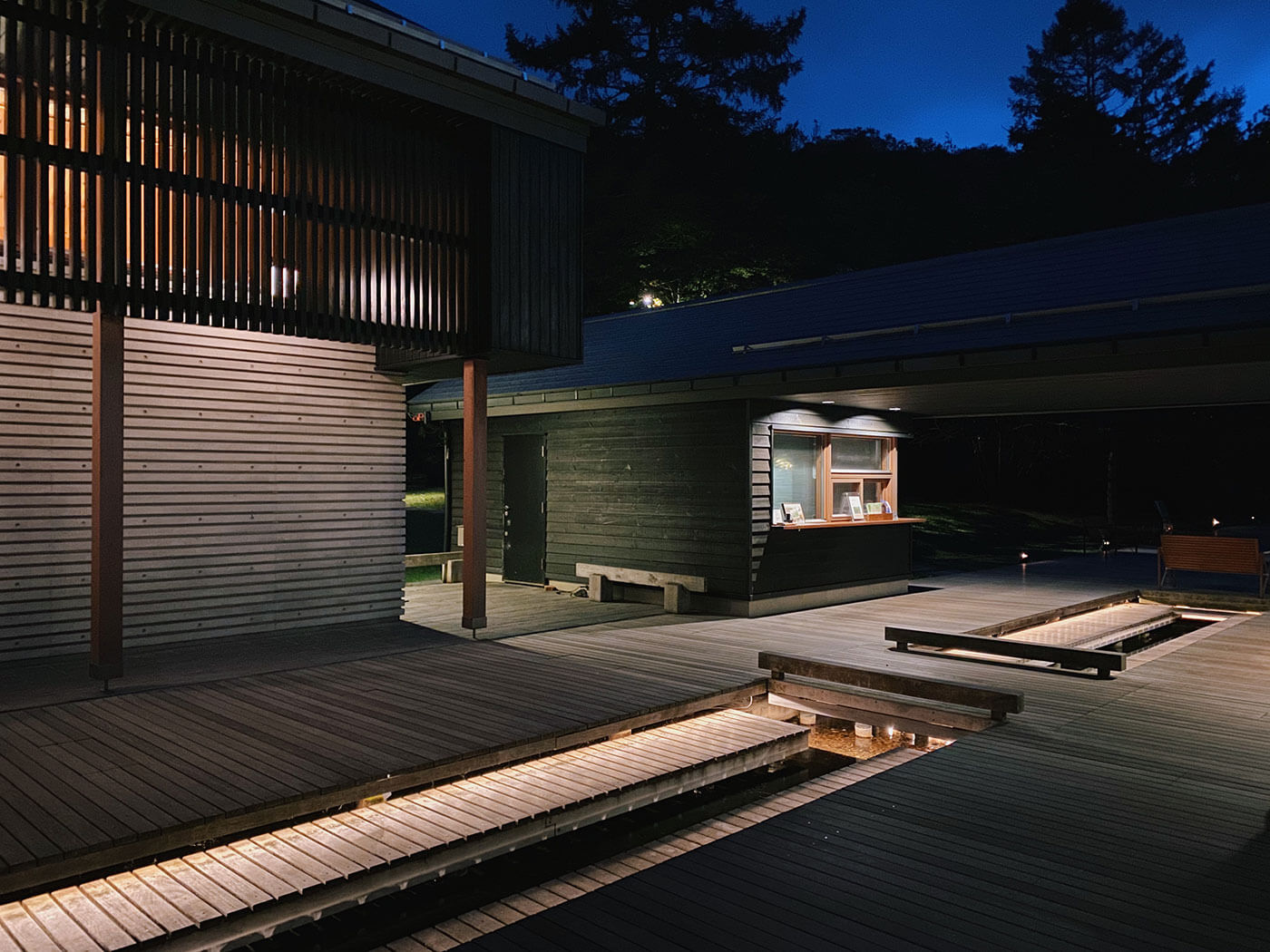
There is an abundant supply of natural hot spring water in Japan due to the amount of seismic activity and volcanoes on the island, so you’ll see onsens everywhere you go in Japan. To give you an idea of how abundant it is, there are over 30,000 naturally occurring hot springs throughout Japan.
As I mentioned before, going to an onsen is a popular way to pass the time in Japan – almost like going to a movie in countries. You go to a dedicated bathhouse to bathe in hot spring pools. You can go alone for a relaxing me-time or make it a social bonding activity by going with friends and family. I have seen many women go in a group and chat (very quietly of course) while dipping in different pools at an onsen.
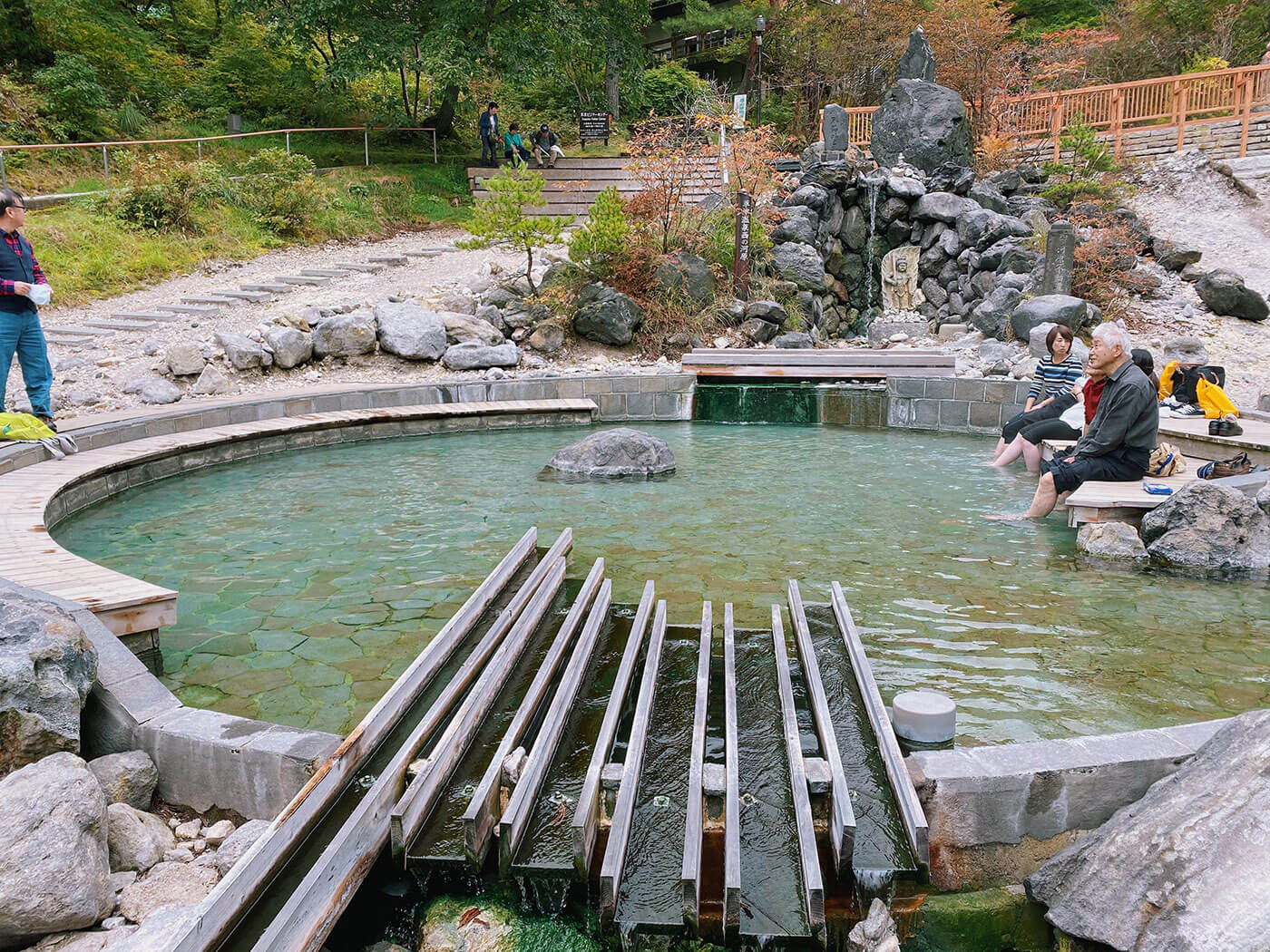
So why should you try onsen while in Japan? First of all, it is a great way to experience one of the most cherished traditions in Japanese culture. Second, bathing in the hot spring water does have medical benefits too! Not only will bathing in onsen help you feel rejuvenated but it is also believed to increase immunity and cure (or provide relief) certain skin conditions, like eczema, or even improve skin texture.
The different types of Onsen pools
Some onsen have different types of pools – they might have an indoor pool, open-air pools (called Rotenburo), pools with different natural minerals that have various beneficial properties for your skin, and pools with different temperatures.
There are 19 minerals that make up the water in an onsen, and each type of onsen water will contain one of these minerals. They can be identified by the color of the water and by smell. The most popular mineral is probably Sulfur, which renders the water a beautiful cloudy milky blue color, and you can tell it by smell. It smells subtly like rotten egg depending on the sulfur content. There are also Alkaline, Hydrogen, and even Iron water.
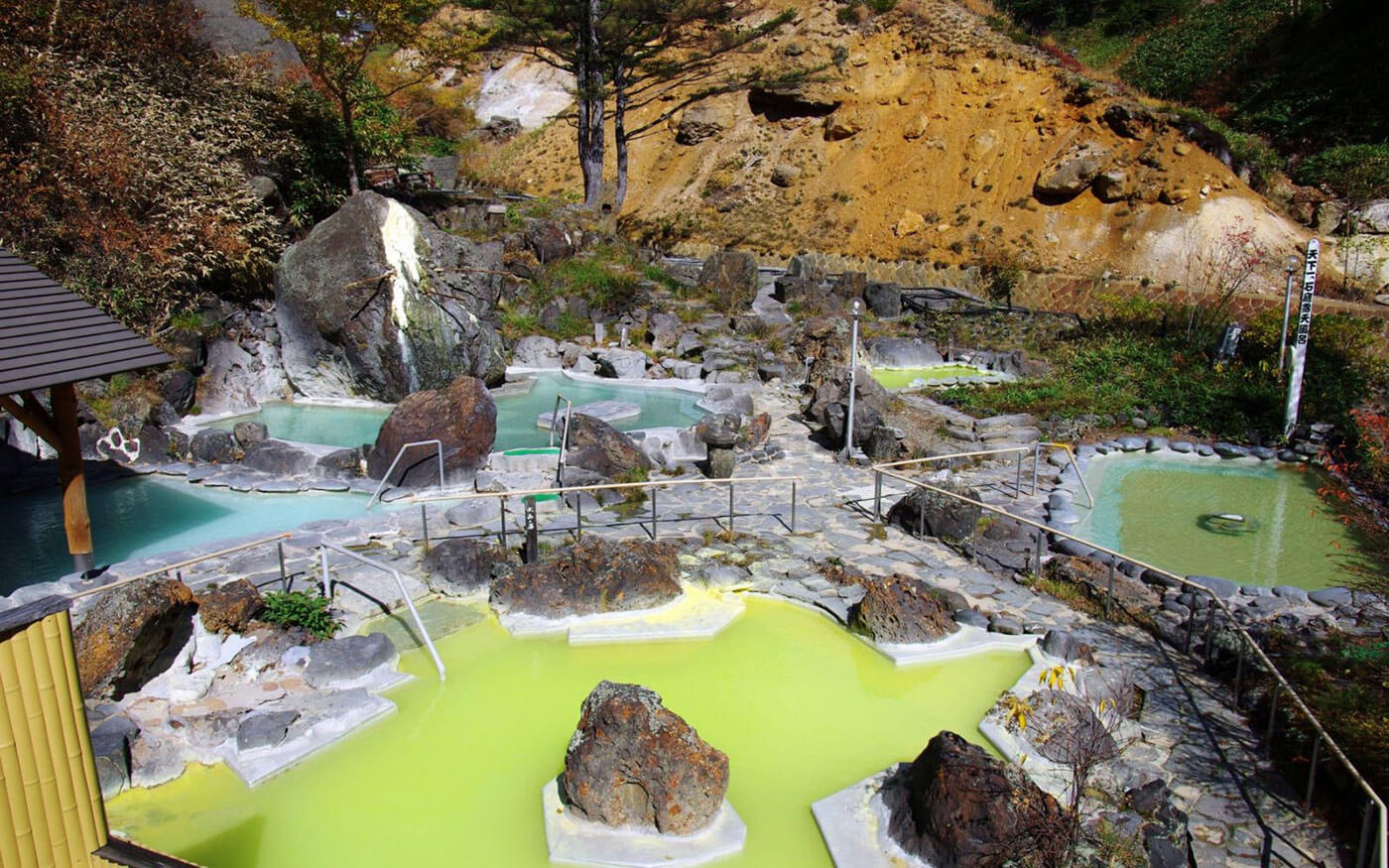
How to use an Onsen: Onsen Etiquette and Rules
Each onsen has its own unique features, but the general etiquette remains universal across all onsen in Japan. I know going to an onsen sounds very intimidating, but I promise you, with some practice it is very enjoyable! Just follow these rules and you will be fine.
1. You MUST shower before you go in
Just like how swimming pools ask you to wash up before going in, it is good etiquette to wash up before going into an onsen. Furthermore, you have to make sure you are free of any traces of soap before entering the hot spring water so that you don’t contaminate the water and ruin it for everyone else. There will be showering facilities provided right at the entrance of the onsen with shampoo, body soap, and conditioner.
2. You have to go in completely naked
Yes, butt-naked. No swimsuits, no bikinis, no underwear. Except for the small towel they give you in the beginning (if you decide to rent towels from them), no other foreign article is allowed inside the onsen as it may contaminate the water. Also, if you go into the onsen water with your swimsuit, it might damage your swimsuit due to the minerals contained in the water!
If you are nervous about being naked, keep in mind everyone else will be naked too. You will stand out more if you attempt to cover up.

3. Can I go to Onsen if I have tattoos?
Tattoos used to be (or maybe still even is) looked down on in Japanese culture. As such, there is a very antiquated, outdated social rule that prohibits displaying tattoos in public spaces, including in an Onsen. This rule dates back to the days when having tattoos was strongly associated with illegal activities and yakuza (Japanese mafia) members.
I find that this rule is not strictly enforced in recent years but it really differs from one onsen to another.
Take two of my very own personal experience for example. I have a small (3-4cm) tattoo on my back. Most of the time I don’t have issues using an onsen.
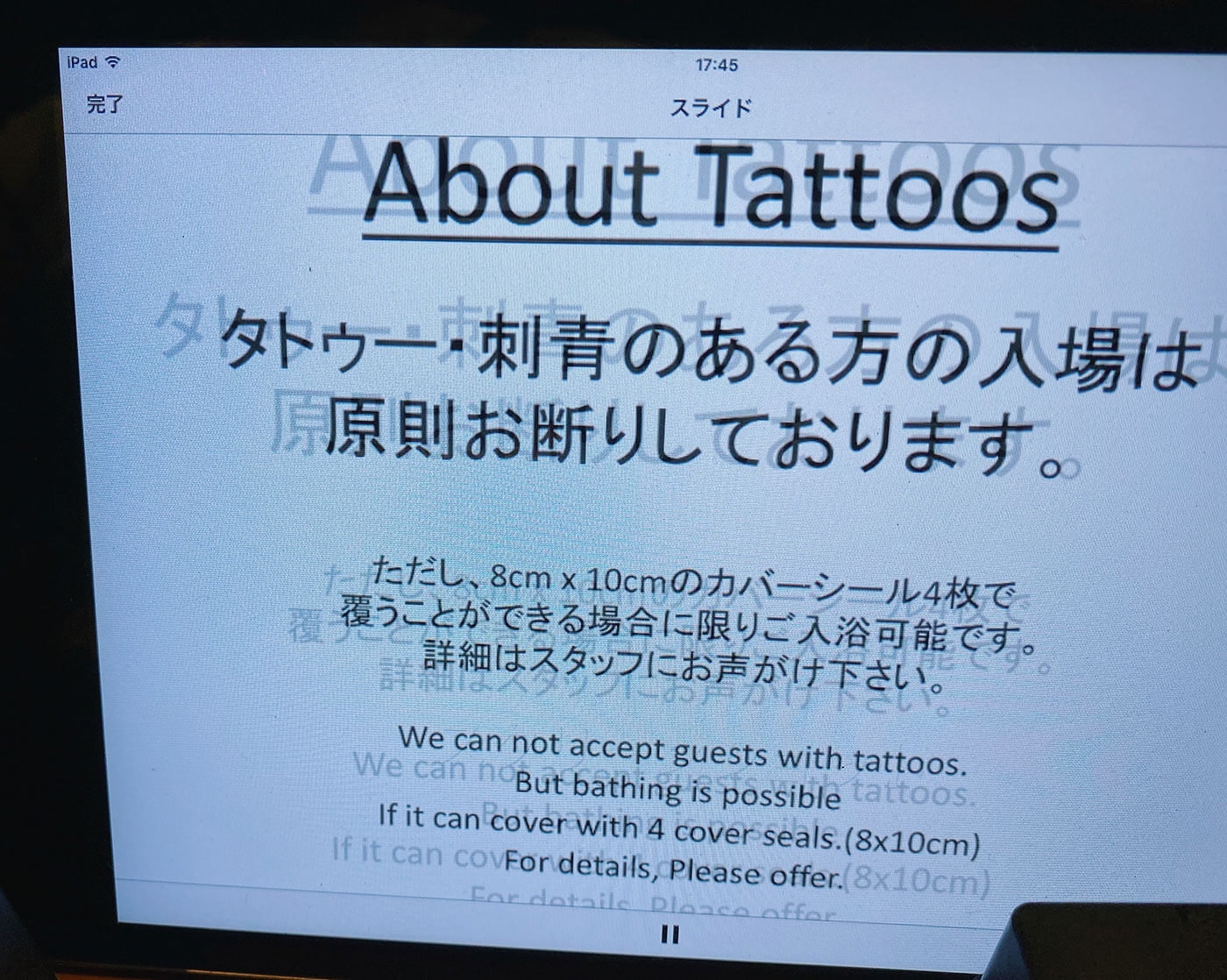
I did get into a bit of an issue at Hoshino Onsen in Karuizawa when my tattoo was spotted by an employee, but I was still able to enter the onsen. I was only asked to cover up the tattoo – they sold me two sheets of skin-colored plaster for 500 yen total.
In another onsen, which was a large spa-like onsen mostly frequented by locals in a non-touristy area, I was asked to leave the premise immediately without any intermediary solution given. They wouldn’t even let me wait for my family member in the waiting area, they wanted me to wait by the entrance in the middle of the night during winter, even though I would be wearing clothes that completely covers up the small tattoo. Thankfully, after a bit of negotiating they let me wait inside. I should also mention that I had gone to this same onsen 3-4 times before and this was the first time I had any issues.
So as you can see, the strictness of the rule really depends which onsen you go to, how big your tattoo is, and whether the location of the tattoo makes it easily concealable.
Unfortunately, if you have very large or prominent tattoos, such as a sleeve that covers your arms or a full-back tattoo, it might be near impossible to enter a public onsen. Please ask the front desk first and respect their decision. You could still try to enter a private onsen.
4. Can pregnant women go into an onsen?
Pregnant women used to be prohibited from entering onsen, but these days it is okay as it has no medical implications for the baby. The concern was more around potentially slipping on the bathroom floor, so make sure you are extra cautious when walking around.
I went to an onsen 8 months pregnant and I was fine. The floors in all of the onsens I went to were made to be rough (with pebbles) so there was little to no chance of slipping.
5. Do not contaminate the onsen water with your bodily fluids
For obvious reasons, I hope! It is a shared bath, after all, so don’t do things you don’t want other people to do, such as:
- Use the bathroom before entering the onsen
- Refrain from going to the onsen if you have large open wounds.
- Don’t pee in the onsen.
- Don’t spit in the onsen.
- Don’t gargle with the onsen water.
- If you have long hair, tie it up so that your hair does not get into the onsen water.
- I also personally wouldn’t go into an onsen if I am in the middle of my period, as I don’t want to leak blood and inconvenience others.
6. Do not use your phone or any electronics / smart watches, and definitely NO TAKING PHOTOS!
This is why there are no photos of the inside of an onsen in this blog post. Your phone and electronics must be immediately put away inside the locker at all times, even when you’re in the locker room or vanity area.
People will be butt-naked everywhere as soon as you enter the locker room, so try not to have your phone out even if you are just texting or using other apps. It may be a source of anxiety and privacy concerns to other onsen visitors. If you need to check the time, there should be a wall clock in each onsen room so there is no need to check your phone.
7. Keep your voice down and try to be quiet
Going to an onsen is supposed to be a relaxing activity for some people, so don’t ruin it for them! Chatting among yourselves is fine, but make sure to keep your voice down. If people next to you can hear your entire conversation, it’s too loud already. Japanese people are very sensitive to noise, so you need to be extra quiet.
Also, don’t play around with your friends – no splashing or swimming in the water. Do that at a swimming pool instead.
How to enjoy an Onsen like a local
Ok, now that we have established the ground rules, here’s what you can expect from going to an onsen in detail:
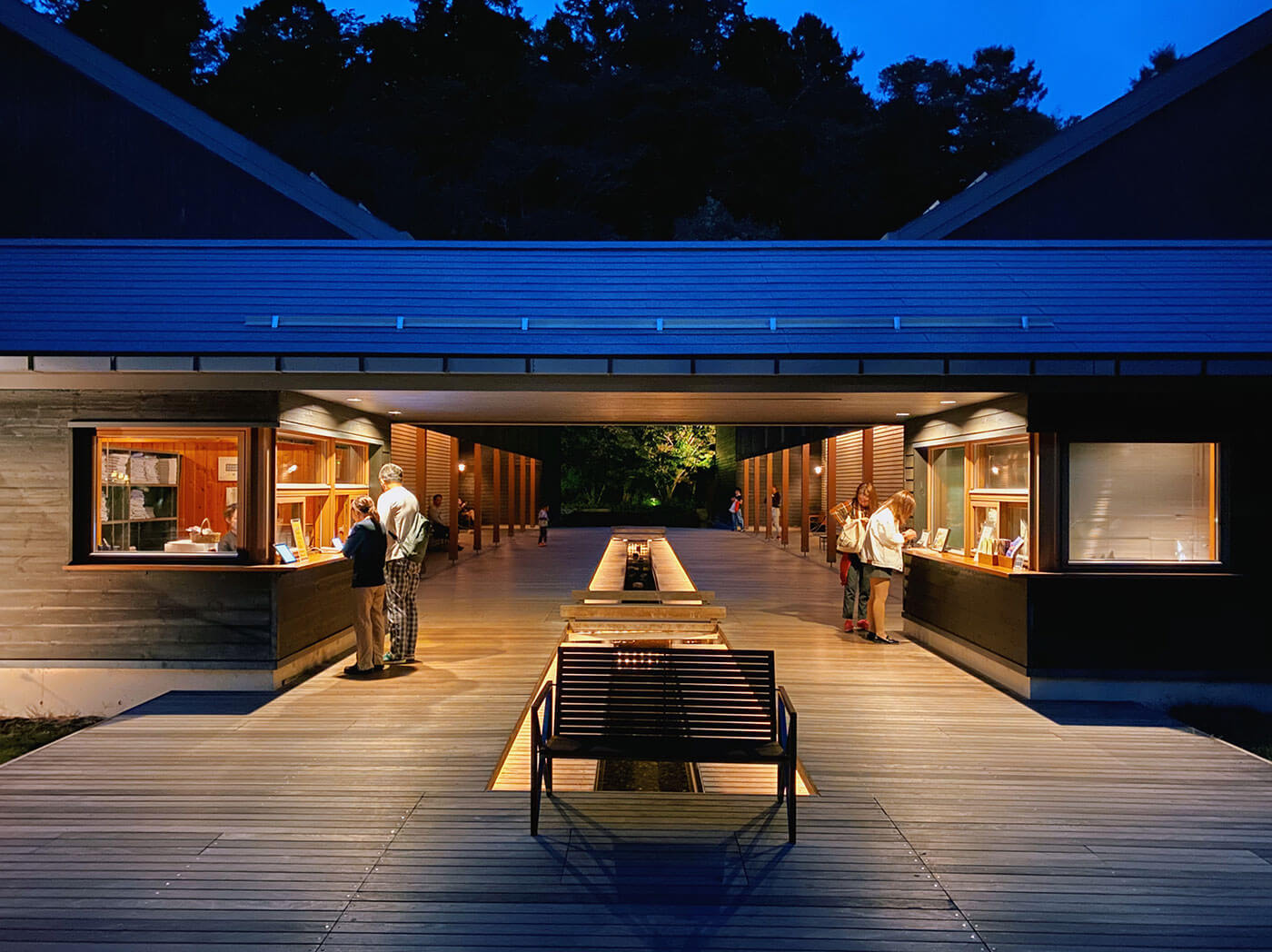
How much does an Onsen cost?
First and foremost, there is an entrance fee – this can vary from as low as 400 yen for a basic public bath (called “sento”), to 600 yen for a typical onsen, to 1300 yen for a fancy onsen. It might even go up to 1500 yen if it’s a large onsen with multiple pools and additional hot stone facilities.
Sometimes, you buy the ticket from the front desk but otherwise, there might be a ticket vending machine near the front desk. This is where you should be buying your tickets (and other amenities you want such as towels, comb, etc) instead of approaching the person at the front desk.
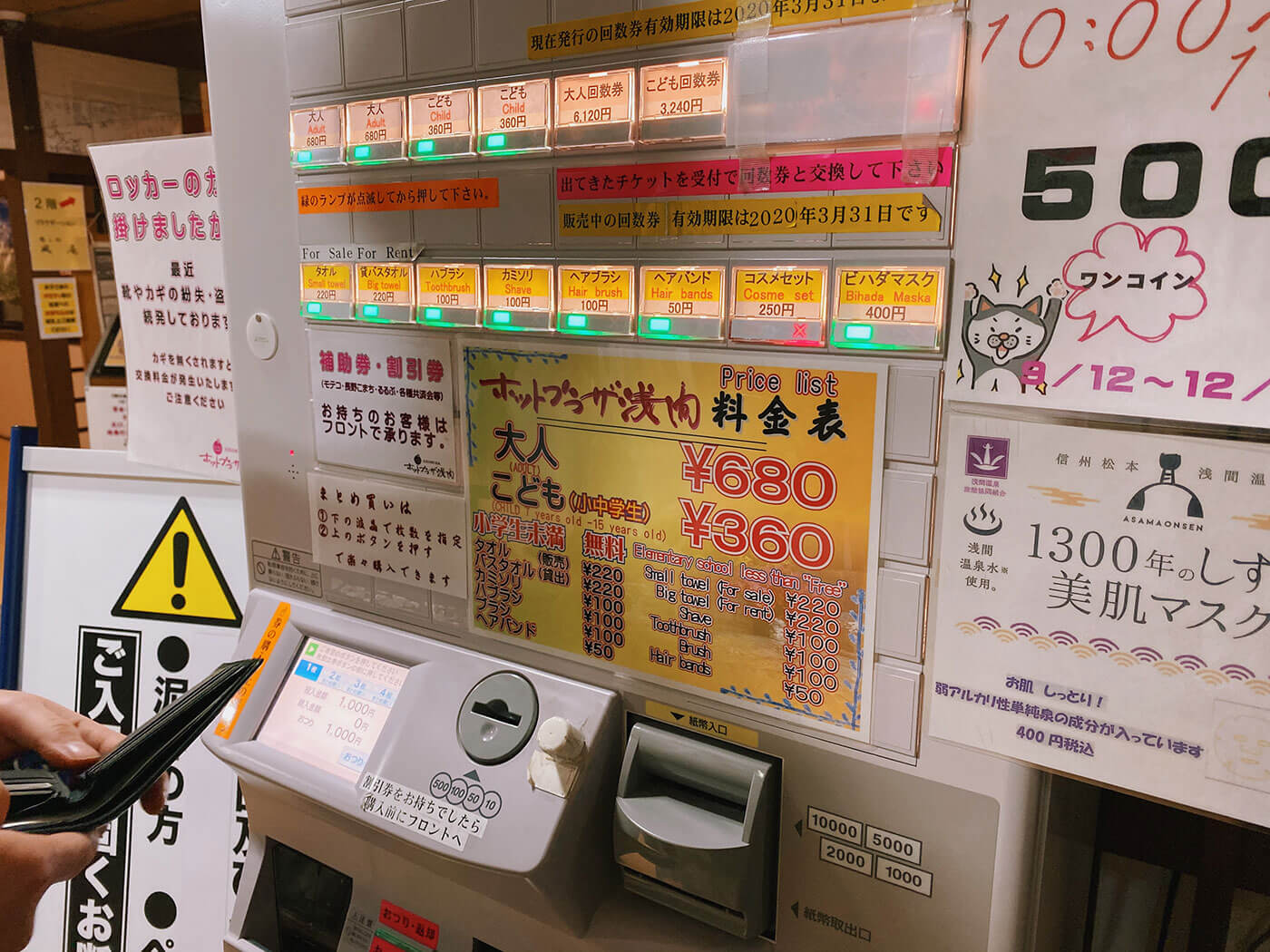
What should I bring to Onsen?
You should bring a change of clothes and a set of towels depending on the onsen you go to. Towels are sometimes free or can be rented for about 300 yen extra at the front desk. Either way, you will need to have one small towel and one regular-size towel.
If you do not want to rent, you can bring your towel from home – just make sure you have one small one, about the size of a face towel, and a regular towel. The small one is to be used inside the onsen, while the regular towel is to be used after showering after you’re done with the onsen (as you would after any shower).
Most onsens will provide you with basic hygiene care – shampoo, conditioner, and body wash. But of course, you can also bring your own toiletries and skincare if you wish – I’ve seen many women do this.
What should I do when I enter an Onsen?
Most onsens are separated by gender. Some onsens are mixed gender or have days where they dedicate the onsen to be mixed gender. In this case, you are expected to rent a bigger towel to cover up your private parts. You can go in the water with these towels.
As soon as you enter the designated onsen area for your gender, take off your shoes (and socks) at the door and place them in the shoe cabinet outside. Sometimes you have to take off your shoes even before you pay the entrance fee – just keep an eye out for the shoe cabinet and observe what others are doing.

You can then go inside the facilities, which usually brings you straight to the locker room and a vanity area that you can use later on. Depending on the onsen, you might need some coins to rent the lockers, but sometimes it’s included in the entrance fare and all you have to do is choose an available one – the ones that are not occupied will have keys hanging outside of it. If it does require a coin, it’s usually just 100 yen.
Find an available locker and put your stuff in. Then proceed to strip naked (again, COMPLETELY naked). Store away your clothes, the big towel, and your phone / any other electronics like smart watches inside the locker. Bring only a small towel and keep the locker key with you. Usually, the locker key comes with a stretchy band that you can put around your wrist, so you won’t lose the keys while bathing.
You can use the bathroom now if you need to. It’s best to do so while you are still in the locker area before entering the bathing room. There is usually no toilet once you get inside the bathing area.
Now, you should be inside the bathing area. Before going into one of the pools, you MUST wash up! There will be a row of showers right before the pool or right next to it. Unlike Western showers, these showers are short – usually about waist height and provided with a small stool, because Japanese people like to sit down while washing up. You can try sitting down while showering too!
After you have washed up thoroughly and made sure you don’t have any soap remnants on your body, you can finally enter the pool and fully submerge yourself up to your neck. The small towel you brought with you should be folded up and put on top of your head while you are inside the pool. When you are out of the pool, it can be used to cover up yourself if you want to or kept on top of your head. Do NOT soak your small towel in the pool water!
You can stay in the pool for as long as you can – usually 10-15 minutes – and let your body temperature rise, slowly. But take note not to stay too long! The pools are usually pretty hot – about 40-43C in temperature. Some people are more prone to hot temperatures and might get lightheaded (like yours truly). If you feel that you’re getting too hot, immediately get out and sit outside of the water – usually, there are benches around where people can just sit and cool down.
If your Onsen has more than one pool, of course, you are free to try each of the pools – but don’t forget to cool down in between! Some Onsens will have a special pool with ice-cold water, which you can use to cool down before going back into the hot water or the sauna.
Speaking of sauna, some Onsen might have a sauna room. In Japan, it’s customary to sit on top of your small towel instead of laying your naked butt directly on top of the wooden benches in the sauna area. In some Onsens, there are towels you can pick up at the entrance of the sauna to sit down.
Repeat this process of heating your body and cooling down a few times until you’re happy and relaxed. Typically people stay in an onsen for about 1 hour, depending on how big the onsen is. Some people might even stay an entire half day since some onsens also have additional facilities like a hot stone massage or a TV room for you to cool down and take a nap.
What to do after onsen
Once you feel like you’re done, you may take a full shower at the designated shower area. You can wash your hair too – most onsens provide hair dryers in the vanity area. But if you’re going to an onsen with natural minerals, you might not want to wash your body with soap since the minerals are very beneficial for your skin and you want it to stay as long as possible. Just rinse up with water.
When you are done showering, simply put your clothes back on and use whatever amenities available in the vanity area – body lotion, face serums, and hair dryer should be provided free to use.
And that’s all! Congratulations on surviving your first Japanese hot spring experience! That wasn’t so bad, right?
I’d also like to add that most onsen has a restaurant within the vicinity. This is a great opportunity to have “washoku” aka traditional Japanese food. The dishes served are usually soba, udon, tempura, Japanese curry (not to be confused with Indian or Thai curries), katsu (deep-fried breaded meat), etc. I personally always time my onsen visits so that I can have a meal afterward!
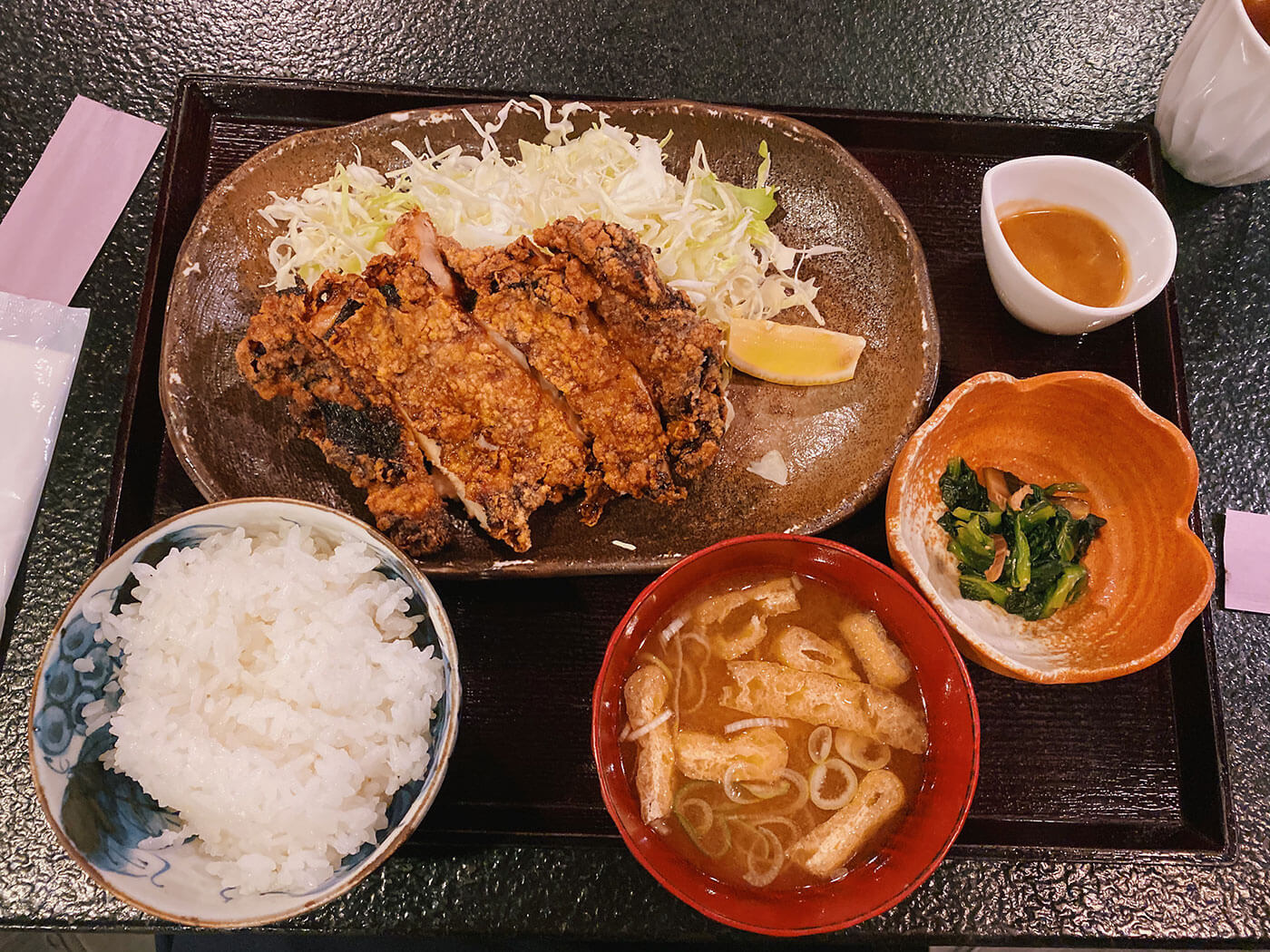
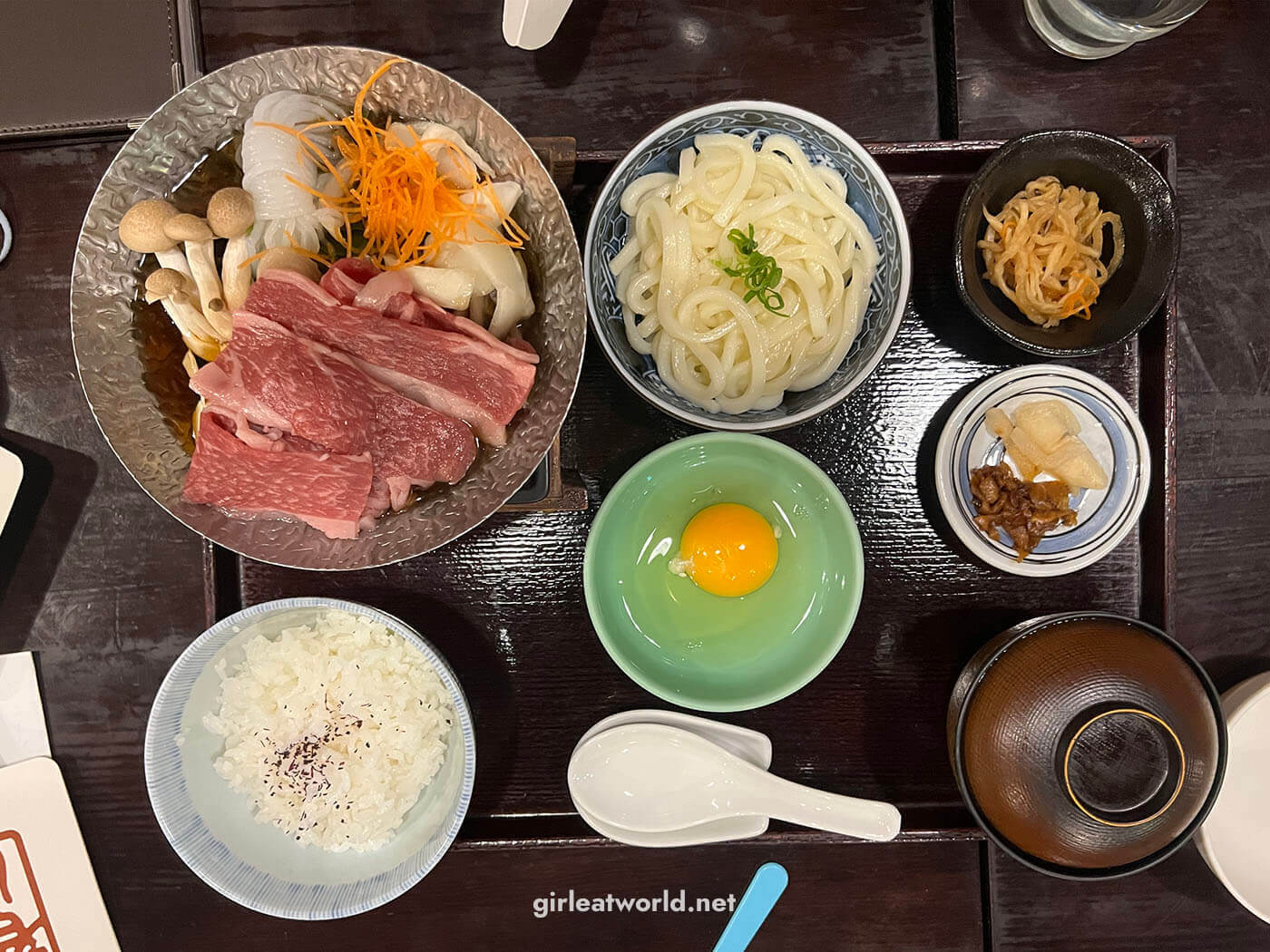
How to book a Private Onsen Room (Kashikiri)
Some places might offer a private onsen room called Kashikiri (which means “to reserve” in Japanese). Personally, I think is totally worth trying at least once, especially if you are traveling with an opposite-gender partner, so you can go into the onsen together.
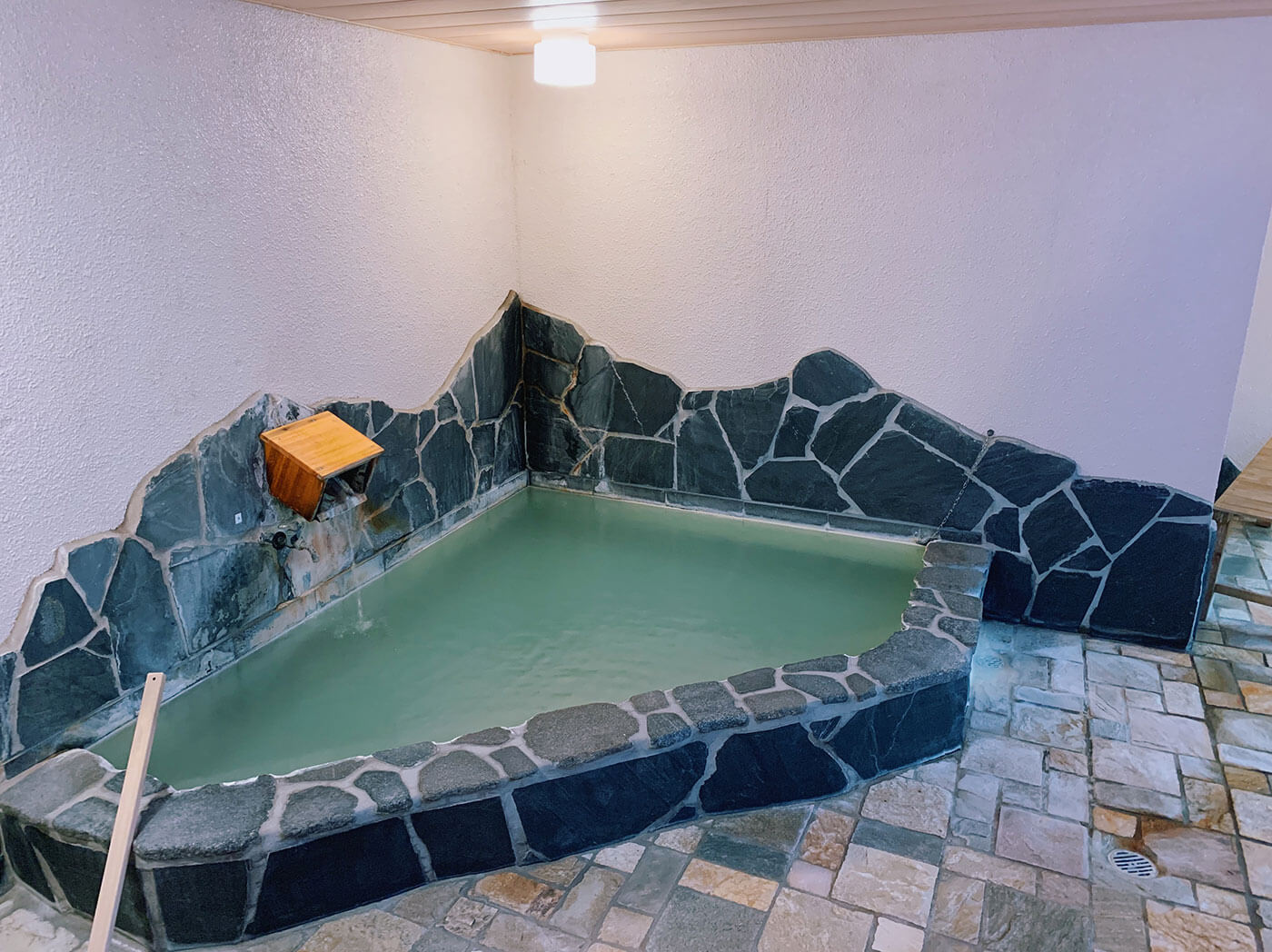
Otherwise, onsens are usually divided by gender and you’ll be separated. Even if there is a mixed-gender onsen, you’ll have to deal with wearing large towels and trying to keep them on, and I find that to be a bit of a hassle.
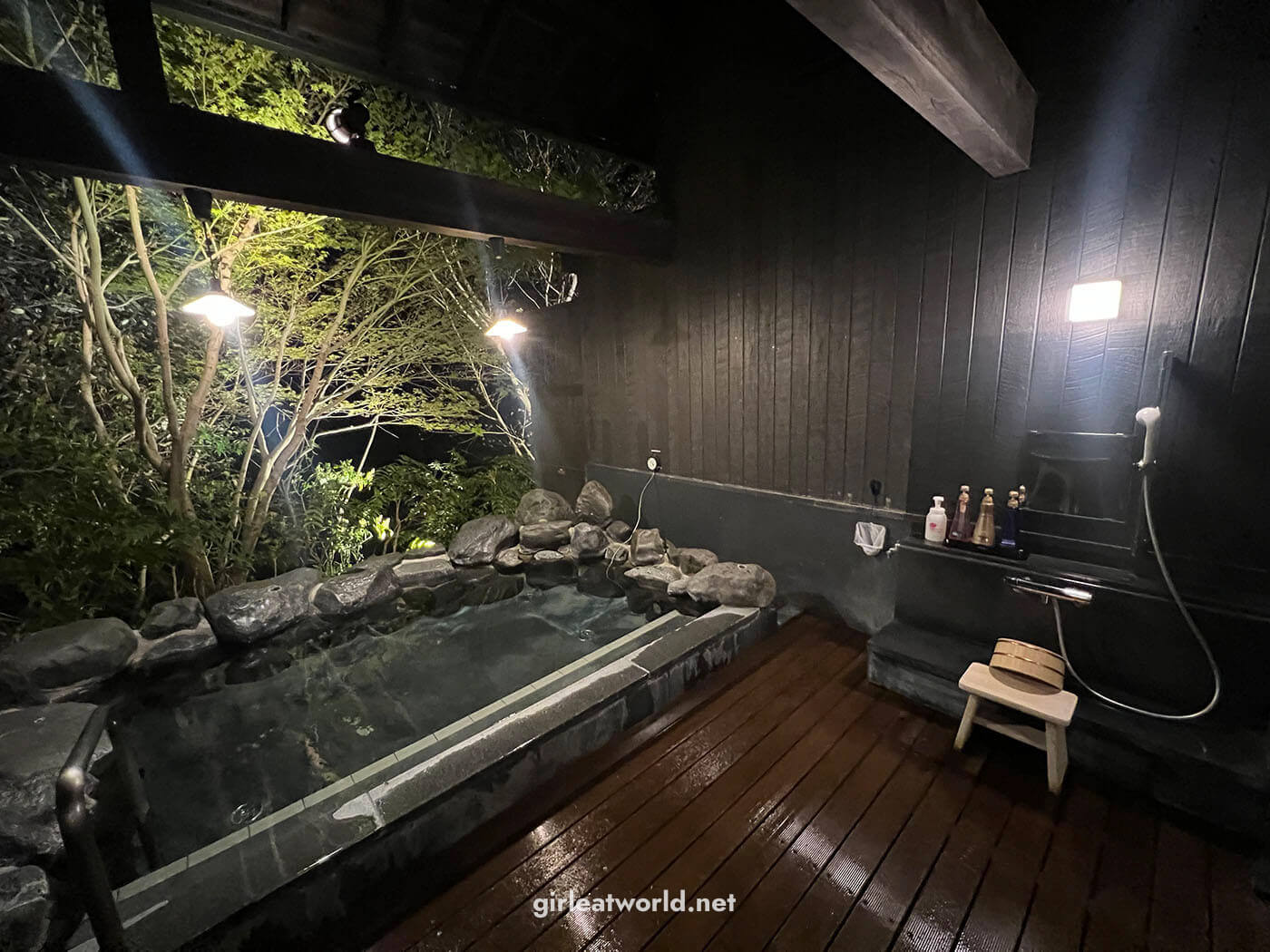
If you want to do a private onsen room, you can ask the front desk for 貸切温泉 (Kashikiri Onsen – Private Onsen) or 貸切露天風呂 (Kashikiri Rotenburo – Private Open Air Onsen). Do this as soon as you can, preferably when you are checking in to a hotel since they have limited time slots and the rooms might be booked up.
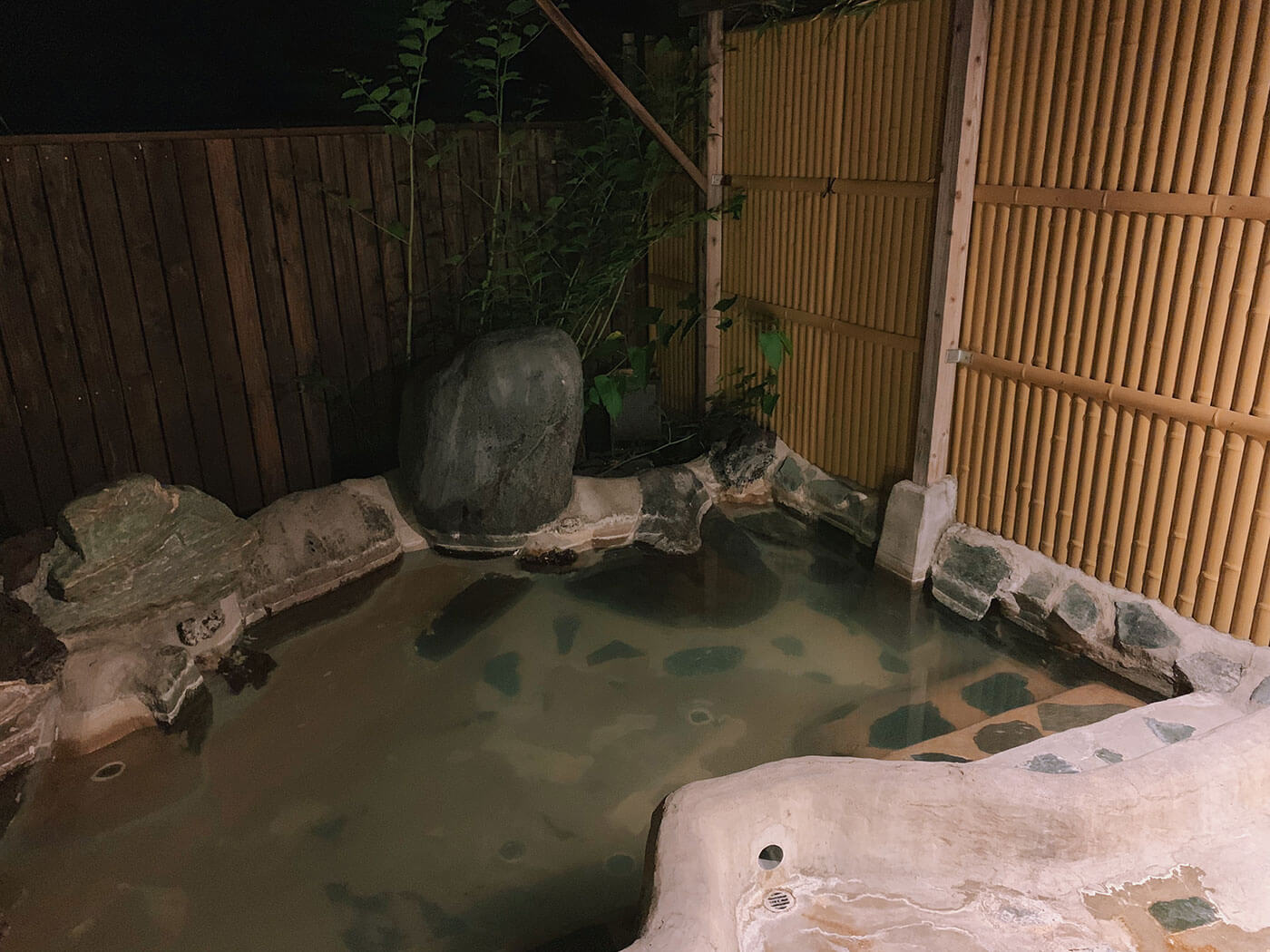
Sento (public bath) vs Onsen – what is the difference?
Earlier in this post, I briefly mentioned “Sento”. Sento is the term for large public bath houses, and it’s usually a lot cheaper than onsen. This is because the water inside a sento is merely heated tap water so it does not provide any extra benefit for your skin aside from warming you up. But sento is still essential to Japanese life since some people in Japan do not have a large bathroom or a bathtub in their house.
I think that’s all I need to share about Onsen! If you have any questions, please feel free to comment below. I am usually fast in answering and I’ll try to answer to my best knowledge!
Til next time 😉

Should I remove my face of all make-up before stepping into an onsen? I understand that you only go up to your neck, but want to be respectful and do the right thing.
This information is very useful. Thanks
In onsen the all genders should be naked ( no underwear, bikini and all) the onsens rooms are also separated. Both genders shouldn’t get to see each other’s body or they get to see because I am nervous of these to be naked and don’t want to show private parts that’s why I am asking this question. ( No Underwear, Bikini and Panty to all genders at all) only small towel to cover up private parts. Or there are pools in onsen to be mixed gender with out naked.
most onsens are separated by gender, but you still have to be naked.
If most onsens are separated then if some friends ( mixed girls and boys) want to have private onsens then there should also be naked or we can put the Underwear both and enjoy the onsen.
Hey Melissa can you answer me for what I asked questions.
I addressed all this in the article above. Can you read it again?
Hey Melissa this is personal Question. In onsen did you wear underwear or your Naked.
Do you have to go barefoot in the bathing area?
yes, you wear nothing to go inside the bath
Do you use the toilet after undressing in the locker room? Or is it unusual to use the toilet while naked?
Either way is ok!
One last question 🙂
Are the onsen toilets squat toilets? Because I am a little nervous about using a squat toilet in front of other women while completely naked, as it reveals a lot and is embarrassing to me. If it is normal to use one while naked though, then I will feel more comfortable. Is it normal to use one while naked, and have you personally done so?
Hey Audrey, although we have to be naked in the onsen, there will still be private bathrooms! So you do not have to do your business in front of other women. In my experience, most of the toilets in Japan are sitting toilet. I have not encountered squat toilets.
I see. Is the bathroom floor clean enough for my bare feet? I’m also a bit embarrassed about my bare feet being slightly sweaty and not smelling the best. In your experience, is that a common occurrence in the onsen?
yup the bathroom floor is very clean. You’re required to bathe before entering the onsen, so just make sure to wash your feet if that is a concern!
Hi Melissa, I was wondering if it is more common to cover private parts with my hands or the small towel.
Hi Jennifer, no it’s not common. Most people use the small towel to cover their hair so that it doesn’t soak into the onsen water
Hey Melissa. Thank you for your guidance on Japan. Is there an Onsen that you would recommend in the Kyoto/Osaka area?
Hey Melissa, do you travel always allone, or how do you travel? I´d like to travel more than I do right now, but I have nobody else who would join me. Thanks for ideas, Miriam
Hey Miriam, i don’t always travel alone, but sometimes I do. Traveling alone is not hard or scary! you should definitely try it sometimes!
Hey Melissa, in onsen All genders should be naked and thay have separated baths then if some genders are going for hot baths then at that time women see to men or men can see to women Naked ( Without Underwear) then there are some rules for these or it is ok to all genders. I am nervous to ask this type of question because I want not to see others (Women without Underwear) and others ( like men to see naked ) it’s not a problem to me. So there is rules and regulations are provided for this.